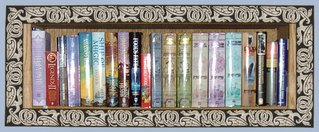Fact is, I have never really appreciated the old Sherlock Holmes stories by Arthur Conan Doyle. I have read them, because I am interested in crime fiction and they are classics, but I never really felt involved with them. Sometimes they would be funny, but most of the time they felt rather stuffy, the famous deductions of Holmes' were not all that impressive, and on the whole he seemed like a rather unattractive character. I re-read some of the original stories after having read Laurie R. King, and "her" Sherlock Holmes somehow affected the reading of the old stuff. It was possible to see that more interesting character lurking beneath the old stuffy one, so to speak.
To be sure, the books are not mainly about Sherlock Holmes. They are usually told by Mary Russell (Laurie King even pretends that she just publishes material sent to her from a mystical source), and are not merely crime stories. The atmosphere, the way King makes early twentieth century London, Dartmoor, Palestine, New York, various places in India come alive... It's brilliant. The perspective is also explicitly feminist, with The Monstrous Regiment of Women as a prime example. It shows that the women's movement of that time was so much more than a few upperclass hysterics arguing for "The Vote".
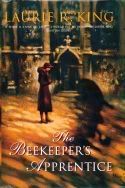
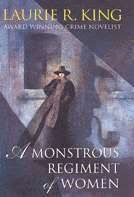
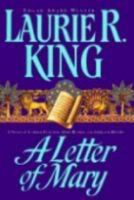
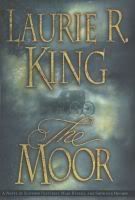


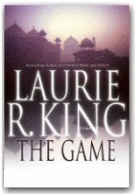

After his career is, at least officially, over, Sherlock Holmes moves to peaceful Sussex. That is where he is made truly alive by Laurie R. King, as she lets him meet her own "heroine" Mary Russell. Or, to be precise: Mary practically stumbles over Sherlock Holmes, and quite instantly gets into a bit of an argument...
Quote from the official website:
"I'd say the blue spots are a better bet, if you're trying for another hive," I told him. "The ones you've only marked with red are probably from Mr. Warner's orchard. The blue spots are farther away, but they're almost sure to be wild ones." I dug the book from my pocket, and when I looked up to wish him a good day he was looking back at me, and the expression on his face took all words from my lips—no mean accomplishment. He was, as the writers say but people seldom actually are, openmouthed. He looked a bit like a fish, in fact, gaping at me as if I were growing another head. He slowly stood up, his mouth shutting as he rose, but still staring.
"What did you say?"
"I beg your pardon, are you hard of hearing?" I raised my voice somewhat and spoke slowly. "I said, if you want a new hive you'll have to follow the blue spots, because the reds are sure to be Tom Warner's."
"I am not hard of hearing, although I am short of credulity. How do you come to know of my interests?'
"I should have thought it obvious," I said impatiently, though even at that age I was aware that such things were not obvious to the majority of people. "I saw paint on your pocket-handkerchief, and traces on your fingers where you wiped it away. The only reason to mark bees that I can think of is to enable one to follow them to their hive. You are either interested in gathering honey or in the bees themselves, and it is not the time of year to harvest honey. Three months ago we had an unusual cold spell that killed many hives. Therefore I assume that you are tracking these in order to replenish your own stock."
The face that looked down at me was no longer fishlike. In fact, it resembled amazingly a captive eagle I had once seen, perched in aloof splendour looking down the ridge of his nose at this lesser creature, cold disdain staring out from his hooded grey eyes.
"My God," he said in a voice of mock wonder, "it can think."
Read more of that chapter, other excerpts, about the books, etc, on Laurie R. King's official website.
The Mary Russell Holmes page contains information about the RUSS-L mailing list, dedicated to the discussion and analysis of the Mary Russell and Sherlock Holmes mysteries, and also links to other sites of Russell/Holmes interest.
The books, so far:
- The Beekeeper's Apprentice (1994)
- A Monstrous Regiment of Women (1995)
- A Letter of Mary (1997)
- The Moor (1998)
- O Jerusalem (1999)
- Justice Hall (2002)
- The Game (2004)
- Locked Rooms (2005)

